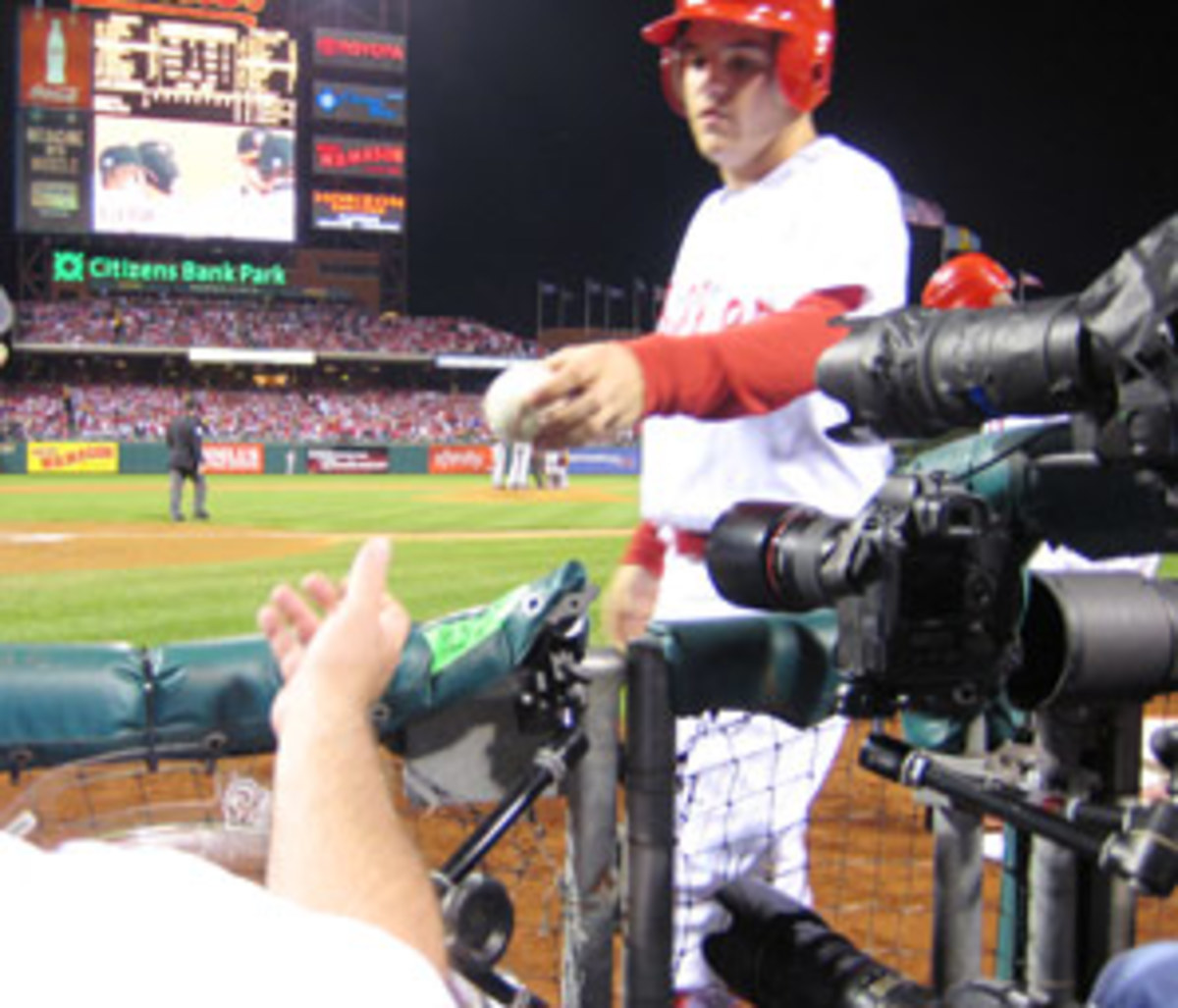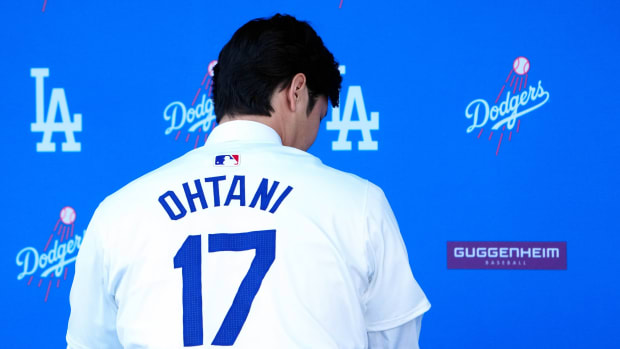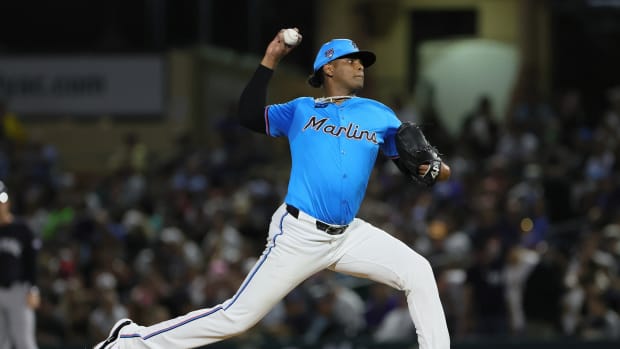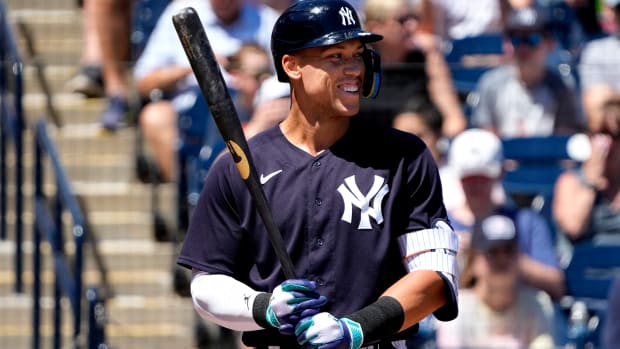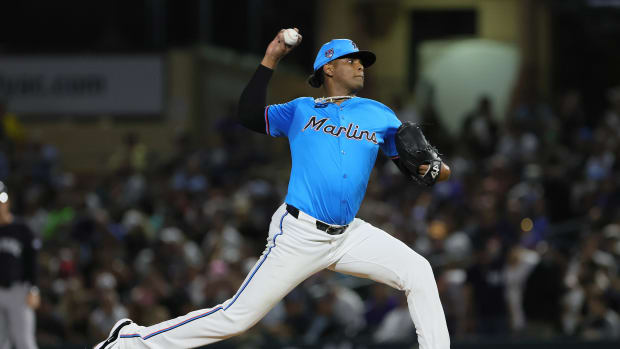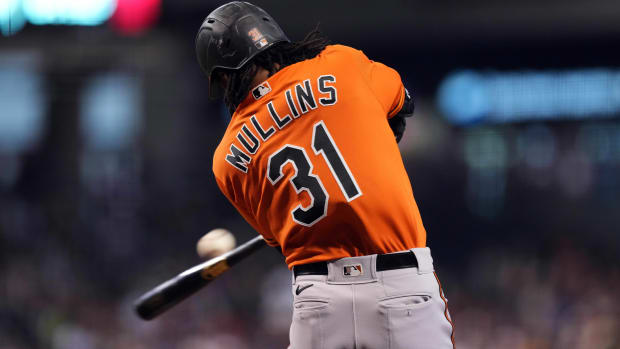Behind scenes with Major League Baseball's authentication process
It's the top of the first inning in Game 2 of the NLCS in Philadelphia, and Roy Oswalt is getting ready to throw his sixth pitch of the game. The Philadelphia Phillies' righthander has a 1-0 count on San Francisco Giants second baseman Freddy Sanchez with one out and the bases empty. Oswalt struck out Andres Torres to lead off the game, giving the electric Citizens Bank Park crowd an energy boost they've taken into this at-bat.
After a hitting at least 92 on the radar gun with his first five pitches, Oswalt hurls an 85 mile-per-hour change-up to Sanchez. This time, the ball completely misses its mark, smacking the dirt behind home plate before bouncing into catcher Carlos Ruiz's glove. It's an innocuous pitch to the 46,000 people in the stands and the millions watching on TV, but it's an important one for the Major League Baseball Authentication Program.
Ruiz hands the ball to home plate umpire Dan Iassogna, who gives the scuffed-up ball to a waiting Phillies batboy. The batboy runs back to the dugout to clean it, then hustles over to MLB authenticator Dennis Watson, who's sitting in a small field box between the first base camera pit and the front row of seats behind home plate. This is the first of dozens of baseballs Watson will receive for authentication on this night. And baseballs are only the tip of the iceberg for all the items MLB's authentication program certifies as being officially game-used.
Watson's task near the Phillies dugout is mirrored by authenticator Robert Bonds on the Giants' side. Watson, Bonds and Sam Turner, this game's lead authenticator, comprise the three-man team that will document all Game 2 memorabilia -- from baseballs to the bases to the lineup cards. Some goods are kept by MLB for sale on its online store. Many go to retailers and other third-party entities which sell authenticated MLB memorabilia. Some special items are sent to the Baseball Hall of Fame.
The list of items which can be authenticated has no limit. Every baseball that remains in the field of play is documented. (Foul balls and home runs that go into the stands are kept by fans.) Broken bats, lineup cards, bases, rosin bags and any other field item is ripe for authentication. Even dirt from the pitcher's mound was collected after Roy Halladay's no-hitter against the Cincinnati Reds in Game 1 of the National League Division Series. "Everything is game," said Howie Shelton, program manager for MLB's authentication program.
By the time of Major League Baseball's postseason, the authenticators who are still working have had a season's worth of games to document collectibles.
Each of the 2,430 regular-season games is attended by at least one authenticator. (Each postseason game typically has three.) One never knows when a game will become etched in history, which was made evident during the past regular season when there were five no-hitters or perfect games. It was the most no-hitters since 1991, when there were seven. The unpredictability of a historical game makes the presence of an authenticator so vital.
"Everything we do is based on what happens [in a game]," said program manager Mike Posner, who noted anywhere from 450,000 to 600,000 items from the 2010 season will have been authenticated. "We're not there trying to authenticate something just to authenticate it. We're there to record the history."
And history is recorded by the authenticators, a group of 130 volunteers who live in the cities of the teams they cover. They're hired from an independent entity called Authenticators, Inc. A law enforcement background is required for the job which takes a healthy chunk of discipline.
Most of Sam Turner's work for Game 2 of the NLCS is done beforehand. He'll consult with Shelton, Bonds and Watson to make sure they're on the same page for what items the home team has requested to be authenticated. Twenty-two of MLB's 30 clubs participate in the program, and they'll usually tell Posner and Shelton what they desire. That information is passed to the on-site authenticators. (Only when so-called "jewel" events such as the All-Star Game does MLB dictate what should be authenticated.)
Once Turner has reviewed the items needed for Game 2, he goes to the groundskeeper's room. Three large cases located in the side of the room opposite the entrance hold the three sets of bases to be used in the game. Each set is used for three innings, so all nine bases need to be recorded.
Turner takes out a roll containing 500 holograms and applies a tamper-proof, uniquely-numbered and lettered hologram to the upper-lefthand corner on the bottom of each base. The holograms are protected in such a way that they self-destruct by tearing if someone attempts to peel them off for re-use. Once it's applied, Turner digitally scans the second part of the hologram, which remains on the roll. That scan feeds the hologram's unique letter and number combination into an online database which catalogs all of MLB's authenticated products. This is what makes it possible for consumers to go to MLB.com, enter an item's number on the authentication page and view a description of it.
The authentication program began in 2000 after it was apparent there was a need for sports leagues to give their collectibles legitimacy. A 1999 FBI investigation found that, in a $1 billion-per-year sports memorabilia industry, up to 85 percent of memorabilia sold with the MLB emblem had been counterfeited. That's when baseball decided something had to be done. "We had to step up because we were losing trust with the fans," Shelton said.
MLB had produced holographic stickers on its postseason merchandise from 1995-99. Yet it decided one it needed to find a holographic manufacturer to produce a hologram that would appear on all products. MLB chose OpSec Security, which it still uses today.
Located in Lancaster, Pa., OpSec produces two different holograms for MLB. One, which has been around since 2008, has a raised red stitch with added color and a sensory element and is used on all regular MLB merchandise. It's the type that can be pulled off an item without a problem. The second hologram is what's used for all authenticated products.
While counterfeiters have replicated the red-stitch hologram, none have succeeded in reproducing the one used for authentication. Even if they tried, there would be at least one obvious signal to tip off its illegitimacy. Many counterfeit logos are produced with the same number, according to Ethan Orlinsky, who oversees MLB anti-counterfeiting program. "The counterfeiter is trying to figure out how they can produce an item which is going to be the most attractive to the consumer without spending as much money as the licensees spend," Orlinsky said. Repeating a number on multiple holograms is one way to do that.
Looking at the hologram is one way to identify and seize counterfeit items. The league works with law enforcement at many levels, including local police departments, the U.S. Marshals Service, the FBI and U.S. Immigrations and Customs. MLB also works with the Coalition to Advance the Protection of Sports logos (CAPS) and the Global Intellectual Property Center (GPIC), an affiliate of the U.S. Chamber of Commerce.
According to MLB, the league has seized or had surrendered more than 5 million pieces of counterfeit items during the last 10 years. Since 1993, when the league started working with CAPS, it has been involved in the seizure or surrender of another 10 million counterfeit goods with a value of more than $364 million. MLB has two methods for its seizures -- civil and criminal.
A civil seizure involves one civilian bringing a lawsuit against another. An investigator is typically hired by the trademark owner, who has to get a judge to sign the seizure order before action is taken against the counterfeiter. According to Orlinsky, the judge will sign the order only if he or she has confidence that the trademark owner will prevail in the case and that there's a risk of flight in the counterfeiter. In other words, that the counterfeit merchandise can be destroyed or concealed.
In a criminal seizure, MLB acts as the plaintiff. It tells law enforcement that somebody has stolen property rights. The law enforcement agency goes to MLB Properties to sign an affidavit which supports the action it wants to bring against the individual(s) selling and manufacturing the merchandise.
Hats, T-shirts and jerseys are the items most often counterfeited. That's because counterfeiters prey on innocent victims who are likely to make impulse purchases, Orlinsky said. And the risk isn't just in the United States. Fake products move quickly throughout Europe, with a noticeable amount of movement in England, Germany and Italy. Brazil and China are other hot spots for counterfeit activity.
"When it comes to physical goods, nobody knows exactly, but China is well over half the problem," said David Hirschmann president and CEO at the Global Intellectual Property Center. "It's probably as high as 80 percent."
Illegitimate manufacturers and sellers aren't just stealing the money of unsuspecting buyers -- they're affecting businesses which sell genuine products. According to the International Anti-Counterfeiting Coalition (IACC), businesses worldwide annually lose an estimated $600-700 billion to counterfeiting. MLB and its partners work with governments to enact legislation that can be enforced against counterfeiters. The results of not doing so are damaging.
Orlinsky cites decreased tax revenue as one of the main problems with counterfeit sales. "Counterfeiters are not legitimate businesspeople, so they're not paying taxes on the items they sell," Orlinsky said. That results in decreased sales tax revenue from businesses, which in turn lowers overall tax revenue. Other forms of taxes can be raised to offset the lower intake from businesses.
Where consumers can feel safe is by purchasing items from an auction site or retailer with an established relationship with MLB. Hunt Auctions is one example. The 20-year-old company based in Exton, Pa. sells "tens of thousands" of items per year, according to owner David Hunt. Aligning his business with MLB comes with an immeasurable value.
"MLB's authentication really adds an element of certainty for not only the buyer but for the seller ... authentication and your reputation in this industry is where it starts," Hunt said.
Curt Schilling, who donated the infamous sock he wore in Game 2 of the 2004 World Series to the Hall of Fame, said in an e-mail message that he never thought about the significance of the sock being authenticated. But he conceded the issues stemming from counterfeit production are very real.
"You cannot begin to understand the depth and breadth of scams and fakes out there," Schilling wrote. "I walked into a store one day and saw a photo hanging on the wall, supposedly signed by me. I knew I never signed it. That was the day it hit me that the market was saturated with bad stuff."
When a game ends, Shelton, Posner and all the on-site authenticators will run through a checklist to make sure they have everything they need. Some items might be seen as unique to that game, and thus, deserving of authentication. For example, Posner has a can of bug spray on his desk which players sprayed on themselves during the Midge Game -- Game 2 of the 2007 ALDS between the New York Yankees and Cleveland Indians.
Sam Turner said that one player after a recent game wanted his broken belt authenticated. Each home and away clubhouse manager is typically the liaison who communicates those needs to the authenticators. "Clubhouse managers are invaluable to us," Shelton said.
Pamphlets explaining what the program is and how to spot fake items are distributed to kiosks and team stores throughout each ballpark. The authenticators work with groundskeepers to ensure they get the necessary field items needed for authentication, and they'll even trade tips with each other on how to best receive and organize all the certified items.
Posner brings a fan's perspective to MLB's authentication program. He admitted that a Joe DiMaggio-signed baseball he bought years ago may not contain Joltin' Joe's real signature. "That's not a feeling I want any of our fans to have or experience," Posner said. "But I think the program has come a long way in terms of the number of forgeries that were out there."






























